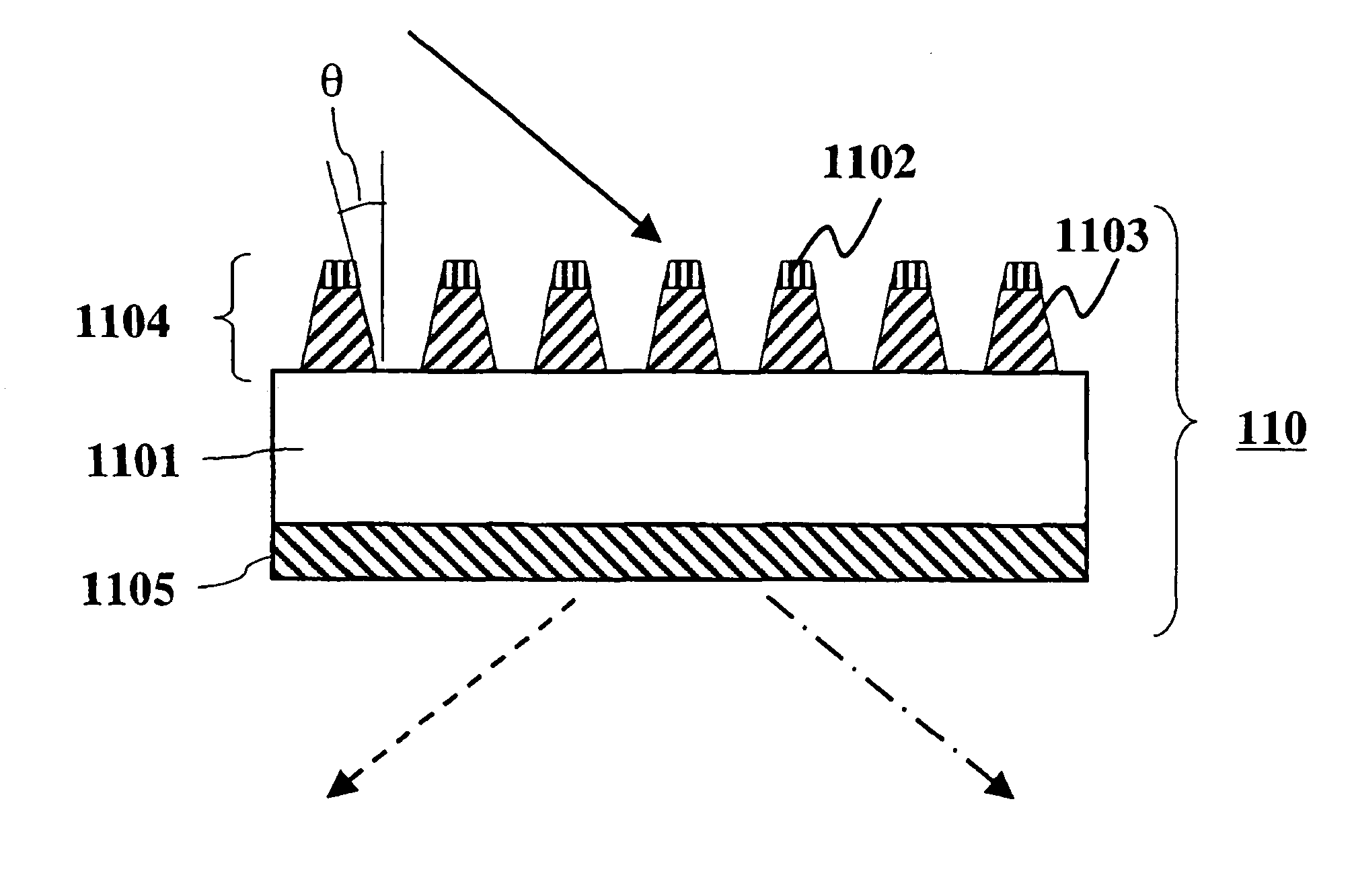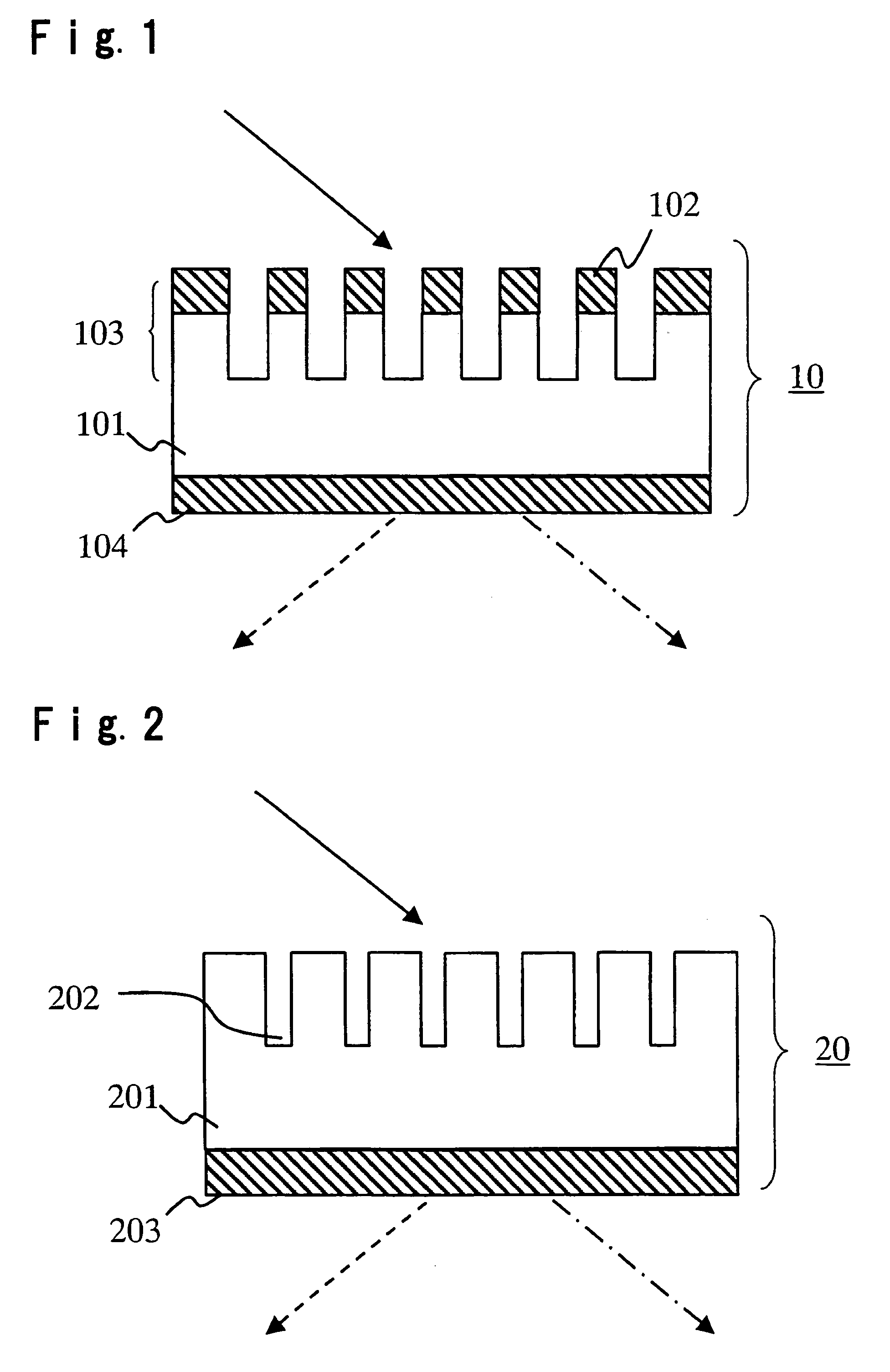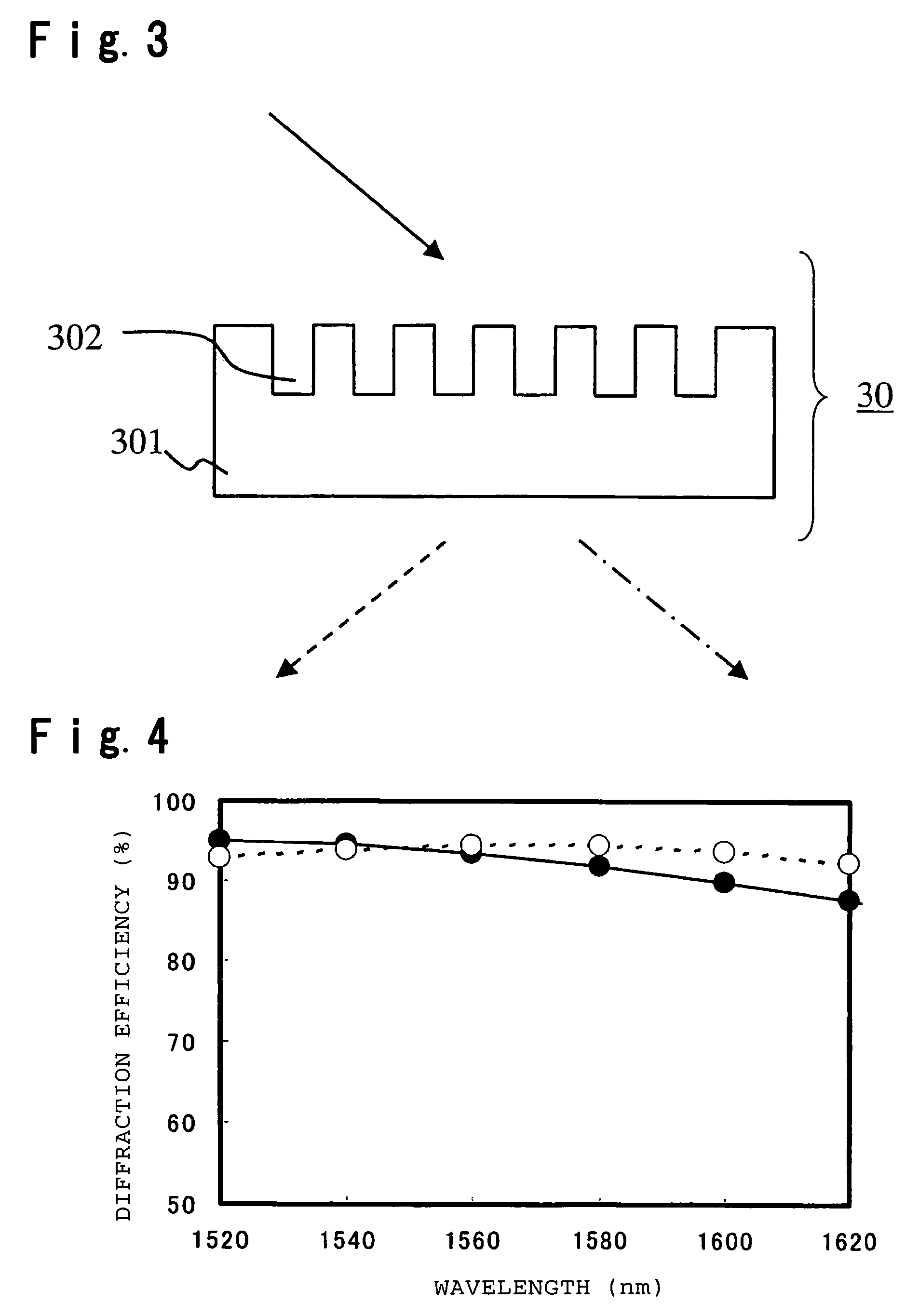Diffraction element and optical device
a technology of optical elements and diffraction gratings, which is applied in the direction of optical radiation measurement, instruments, spectrometry/spectrophotometry/monochromators, etc., can solve the problems of large separation performance of diffraction gratings, limitation in mold production, and difficulty in producing tooth-form diffraction gratings, etc., to achieve excellent flexibility in disposing optical elements, high utilization efficiency of light, and large separation
- Summary
- Abstract
- Description
- Claims
- Application Information
AI Technical Summary
Benefits of technology
Problems solved by technology
Method used
Image
Examples
example 1
[0075]FIG. 1 is a side view showing the construction of the spectral diffraction element of this example. In this Example, a quartz glass of 2.0 mm thick was used as a transparent substrate 101, and an antireflective film 102 comprising four layers made of TiO2 and SiO2 was provided on a surface of the transparent substrate so that the reflectivity became minimum at an incident angle of 50°. Then, a diffraction grating of rectangular shape was formed by using photolithography and dry etching techniques. Namely, portions of the antireflective film corresponding to recessed portions of the grating were removed by etching first, and then, the quartz glass was etched to have an etching depth of 900 nm, whereby a rectangular diffraction element 103 having a grating period of 1,000 nm in which a multi-layer film was formed on the top of the projecting portions of the quartz glass, was obtained. The proportion of the widths of the recessed portion to the projecting portion was 1:1.
[0076]Th...
example 2
[0078]FIG. 2 is a side view showing the construction of the spectral diffraction element of this example. In this Example, a quartz glass substrate of 2.0 mm thick was used as a transparent substrate 201. The transparent substrate 201 was coated with a photoresist, and a photolithography method was applied using a photomask, not shown, having opening portions with a size of ⅓ of the grating period, to form a photoresist mask in which the proportion of the width of the projecting portion to the recessed portion is 2:1. Then, by using a dry etching technique, a rectangular diffraction grating having a depth of 3,400 nm was formed. Namely, a rectangular diffraction grating 202 having a grating period of 1,500 nm, constituted by projecting portions of 1,000 nm wide and recessed portions of 500 nm wide, and made of a quartz glass having a grating depth of 3,600 nm, was formed.
[0079]Then, on the surface of the transparent substrate 201 opposite from the surface on which the rectangular di...
example 3
[0081]FIG. 9 is a side view showing the construction of the spectral diffraction element of this example. In this Example, a colorless glass substrate of 2.0 mm thick was used as a transparent substrate 901 and a film of Ta2O5 of 1.3 μm thick and a film of SiO2 of 0.35 μm thick were deposited on a surface of the transparent substrate by a sputtering method. Then, the films thus formed were selectively removed by using techniques of photolithography and dry etching to form a rectangular diffraction grating 904 comprising a Ta2O5 layer 903 and a SiO2 layer 902. In this step, the proportion of the exposed portion to unexposed portion was adjusted by optimizing the opening of a photomask, not shown, to be used for the exposure, so that the proportion between the grating recessed and projecting portions in a grating period became 6:4, namely, the projecting portion became 600 nm and the recessed portion became 400 nm.
[0082]Then, on the other surface of the transparent substrate 901 oppos...
PUM
 Login to View More
Login to View More Abstract
Description
Claims
Application Information
 Login to View More
Login to View More - R&D
- Intellectual Property
- Life Sciences
- Materials
- Tech Scout
- Unparalleled Data Quality
- Higher Quality Content
- 60% Fewer Hallucinations
Browse by: Latest US Patents, China's latest patents, Technical Efficacy Thesaurus, Application Domain, Technology Topic, Popular Technical Reports.
© 2025 PatSnap. All rights reserved.Legal|Privacy policy|Modern Slavery Act Transparency Statement|Sitemap|About US| Contact US: help@patsnap.com



